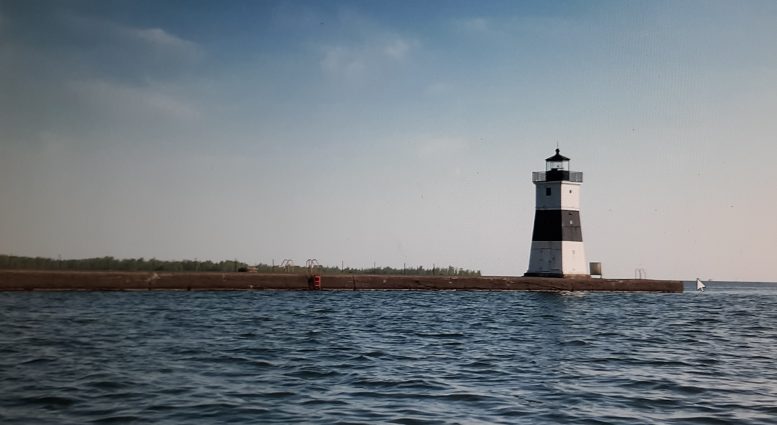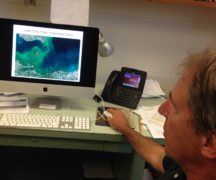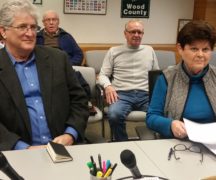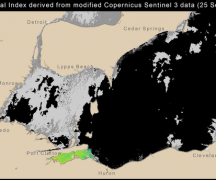By JAN LARSON McLAUGHLIN
BG Independent News
Michigan continues to kick Ohio’s ass-ortment of tourism efforts.
Part of that may be due to the larger amount the state to the north invests in attracting tourists. Part may be due to the algal blooms which make Lake Erie less attractive to visitors. And part may just be because the media keeps talking about that algae, according to Ohio’s top tourism official.
Melinda Huntley, executive director of the Ohio Travel Association, spoke earlier this week at the annual TMACOG meeting in Perrysburg. Ohio, she said, has a lot to offer tourists – but isn’t doing a very good job of letting people know.
Huntley said she was at a meeting unrelated to tourism recently, when she decided to quiz those present about their first impressions about Lake Erie.
These were their one-word answers:
- Cold – that’s bad, she said.
- Michigan – that’s very bad.
- Fishing – that’s good.
- Boating – “that’s really good,” she said.
“True story,” Huntley said, describing another incident where a friend went to a convention along the Mississippi River. People along the shore were marveling at a big boat in the river.
Then someone piped up. “Have you ever been to Toledo to see the freighters come off the lakes?”
“We all take the granted what we see every day,” Huntley said.
Tourists want a variety of activities in places of beauty, heritage, arts and culture. The Lake Erie region can give them hiking, shopping, birding, boating.
“They like food and wines,” she said. And they like to take selfies to show others about their adventures. “That’s a challenge.”
Ohio has all those. But where the state falls short is in self-promotion.
“Perception is reality,” Huntley said. “We may have those things,” but if Ohio doesn’t tell people, they won’t come.
Many potential tourists are under the impression that the Lake Erie area is still primarily industrial. “We realize people are geographically challenged,” she said.
And many people have the impression that the entire lake is green with algae – except Cedar Point. “It was in the commercials,” she said of the beautiful blue lake surrounding Cedar Point. “It was what they saw.”
Lake Erie tourism is still reeling – not from the algal blooms themselves – but from the continuing mention of them by the media, Huntley said.
That has led to big impacts on businesses from vacation cancellations, early departures and decreased sales. It’s far too easy for families to scratch Lake Erie off their vacation lists when media coverage lingers on the harmful algal blooms, she said.
A Google search for Lake Erie, turned up 18 negative stories and seven positive stories, Huntley said. A search for Lake Erie images came up with 60 percent negative photos.
“This is hurting us,” Huntley said, comparing the impact to oil spills where economies struggle to recover. “It’s impacting our ability to promote this region.”
According to Huntley, the media is a big part of the problem.
“It’s not the algae blooms that’s hurting us – it’s how we are talking about it,” she said. “We need to recoup what we’ve lost.”
Huntley suggested that regional leaders take the following steps to boost tourism:
- Support policies for healthy environments.
- Support dedicated funding to market Ohio to tourists.
- Get to know area leaders in the travel industry.
- Encourage local travel and economic development officials to work together.
- Recognize the employment value of tourism jobs.
- Push for schools to start after Labor Day, so the tourism industry doesn’t lose so many workers during a busy time.
Michigan spends about $32 million a year to market itself to visitors of “Pure Michigan.” Meanwhile, Ohio spends about $10 million a year to market “The Heart of it All.”
“Michigan you kick us every time,” Huntley said.
“We need to be competitive because the world is a really noisy place right now,” she said.
But Ohio actually taxes the tourism industry at a higher rate than other industries, Huntley said.
“We are actually curtailing our potential growth.”
But even with those challenges, Ohio’s tourism industry is ranked at seventh in the nation. It attracts visitors who spend $35 billion a year on expenses like lodging, gas and food. Adding on the tourism vendors which benefit bumps up the revenue by another $9 billion annually.
That makes the tourism industry the third largest industry in the state, Huntley said.
“It’s huge, but it’s misunderstood.”
The state boasts 428,000 full-time equivalent jobs sustained by tourism – which is 9 percent of Ohio’s employment, she said.
And while many of the most visible jobs are lower skilled and lower pay – the jobs behind them are not, Huntley said. “Tourism is a career path for many,” she said.
The industry also results in tax revenues in several communities.
“When we travel, we are supporting teachers, police, road repairs,” Huntley said.





